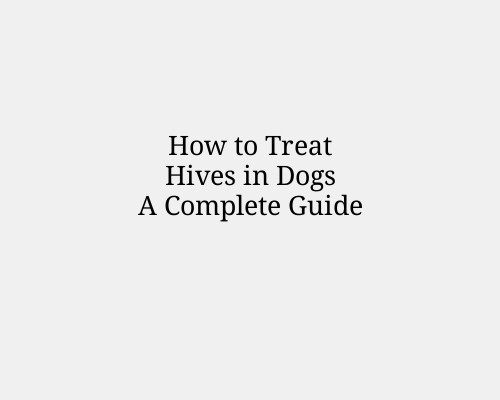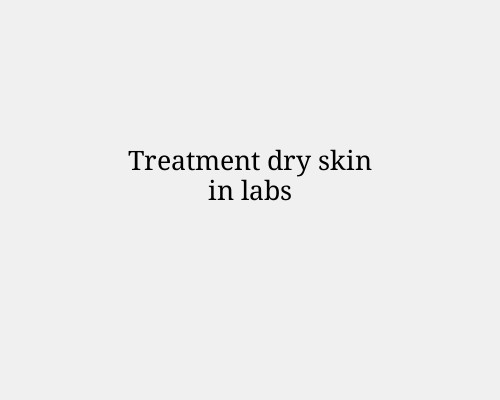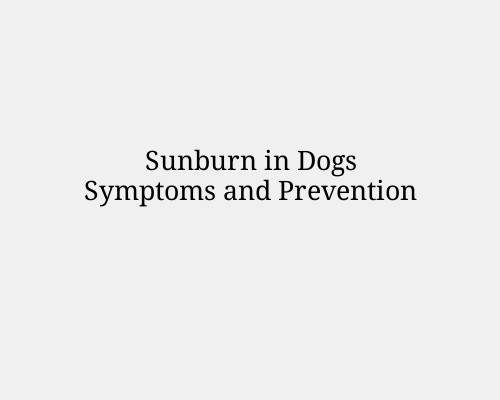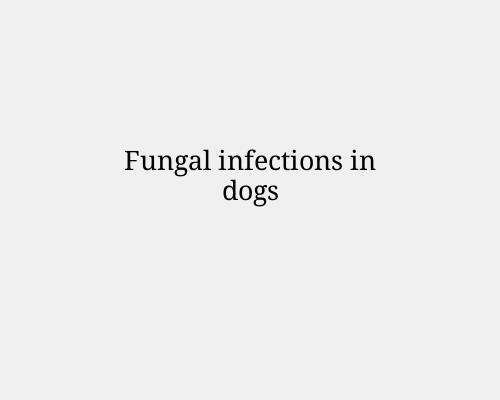Mange in Puppies
Mange in Puppies: Causes, Symptoms, Treatment, and Prevention
Mange is a skin condition caused by mites, which are microscopic parasites that can infest a puppy's skin, leading to irritation, hair loss, and potential infections. Puppies are particularly vulnerable due to their developing immune systems. There are two common types of mange in dogs: demodectic mange and sarcoptic mange. Understanding these conditions can help ensure your puppy gets the proper care and treatment.
Types of Mange in Puppies
Demodectic Mange (Demodicosis) Caused by the Demodex canis mite.
Common in puppies since the mite is often passed from the mother to her litter shortly after birth. Not contagious to humans or other dogs.
Sarcoptic Mange (Scabies)
Caused by the Sarcoptes scabiei mite.
Highly contagious to both humans and other animals.
More aggressive and can lead to intense itching and irritation.
Symptoms of Mange in Puppies
Hair Loss: Patches of hair loss, typically around the face, ears, and front legs in the early stages.
Skin Redness: Inflamed skin, often appearing dry, scaly, or crusty.
Intense Itching: Especially in sarcoptic mange, where puppies will scratch incessantly.
Thickened Skin: Chronic cases may lead to thick, wrinkled, or pigmented skin.
Secondary Infections: Bacterial infections may occur due to excessive scratching or open wounds.
How Mange Is Diagnosed
A veterinarian will typically perform:
Skin Scraping: Examining skin cells under a microscope to identify mites.
Fur Pluck Test: Collecting fur samples to detect mites or eggs.
Clinical Signs: Reviewing your puppy’s symptoms and history.
Treatment Options
Medicated Shampoos and Dips
Benzoyl peroxide shampoos and lime sulfur dips are often prescribed to kill mites and soothe the skin.
Topical Treatments
Spot-on treatments (e.g., selamectin or moxidectin) can be highly effective in controlling mite populations.
Oral Medications
Isoxazoline class drugs (e.g., fluralaner, afoxolaner) are frequently prescribed for mange and offer broad-spectrum parasite control.
Antibiotics
If secondary bacterial infections are present, antibiotics may be required.
Corticosteroids
Prescribed in severe cases to reduce inflammation and itching.
Home Care and Management
Isolate the Puppy: If sarcoptic mange is diagnosed, keep your puppy away from other pets and family members until cleared by the vet.
Disinfect Bedding and Toys: Wash and disinfect all items that have come into contact with your puppy.
Boost Immunity: Ensure your puppy is on a balanced diet to help strengthen their immune system.
Routine Grooming: Regular baths with vet-approved shampoos can help keep skin healthy and mites at bay.
Preventing Mange in Puppies
Regular Vet Checkups: Early detection is key to preventing mange outbreaks.
Parasite Control: Keep your puppy on a monthly flea and mite preventative.
Quarantine New Pets: Avoid introducing new pets without a veterinary checkup.
Clean Environment: Regularly clean and disinfect living areas to reduce the risk of mite infestations.
When to See the Vet
If your puppy shows signs of mange, early intervention is essential. Delaying treatment can lead to secondary infections, scarring, or chronic skin conditions. Mange can be effectively managed with the right care and treatment plan.
By staying informed and proactive, you can protect your puppy from the discomfort and complications of mange.
Yeast infections in dogs are common, particularly in areas with warm, moist environments or skin folds that can trap moisture. They are typically caused by an overgrowth of *Malassezia* yeast, which naturally exists on a dog's skin. Here’s a breakdown of what you should know:
Causes of Yeast Infections
Underlying Allergies: Environmental or food allergies can lead to skin irritation, which creates an environment favorable for yeast growth.
Moisture and Humidity: Dogs prone to ear or skin folds may trap moisture, leading to yeast overgrowth.
Immune System Issues: Dogs with weakened immune systems are more susceptible to yeast infections.
Antibiotics or Steroids: Long-term use of antibiotics can alter skin microbiota, promoting yeast overgrowth.
Common Areas for Yeast Infections
Ears: This is the most common area. Symptoms include head shaking, redness, and a waxy brown or yellow discharge with a strong odor.
Skin Folds: Breeds with wrinkled skin, like Bulldogs, are prone to yeast infections in these areas.
Paws: Redness, licking, chewing, and a "corn chip" smell are signs of paw yeast infections.
Groin/Armpits: Warm, damp areas can be a breeding ground for yeast.
Symptoms
Itching and scratching
Red, inflamed skin
Greasy or flaky skin
Musty odor
Hair loss in affected areas
Chronic ear infections (if ears are involved)
Diagnosis
A veterinarian will typically diagnose a yeast infection through:
Physical Exam: Identifying characteristic signs like odor, redness, and discharge.
Microscopic Examination: Skin or ear swabs may be collected and examined under a microscope to confirm yeast presence.
Treatment Options
Topical Antifungal Treatments: Shampoos, wipes, or sprays containing ingredients like ketoconazole, miconazole, or chlorhexidine are commonly prescribed.
Ear Medications: If ears are affected, antifungal ear drops or ointments may be necessary.
Oral Antifungals: Severe or chronic infections may require oral medications like fluconazole or itraconazole.
Address Underlying Issues: Allergies, moisture control, and diet adjustments may be necessary to prevent recurrence.
Dietary Supplements: Omega-3 fatty acids and probiotics can help support skin health.
Home Care Tips
Keep ears, paws, and skin folds clean and dry.
Bathe with medicated shampoo if recommended by a vet.
Monitor and address any recurring allergies promptly.
Avoid over-bathing, which can disrupt the skin’s natural barrier.
Prevention
Maintain regular grooming to control moisture.
Ensure a balanced diet to support overall immune function.
Regular ear checks for breeds prone to infections (e.g., Cocker Spaniels, Basset Hounds).
By catching and treating yeast infections early, you can prevent them from becoming chronic or spreading. Regular veterinary care is key to keeping these infections under control.
Recognizing bacterial skin infections in dogs involves understanding common symptoms, identifying risk factors, and consulting a veterinarian for confirmation. Here's how you can spot the signs of bacterial skin infections in your dog:
Excessive Scratching and Licking
Dogs with bacterial skin infections often scratch or lick their skin excessively in an attempt to relieve irritation. This behavior can cause further damage to the skin, making the infection worse.
Redness and Inflammation
Bacterial infections typically cause the skin to become red, inflamed, or swollen. You may notice areas where the skin looks irritated or inflamed, particularly around folds and creases.
Pus-filled Pimples or Abscesses
Bacterial infections often lead to pustules or abscesses, which are small, raised, and pus-filled lesions. These can appear anywhere on your dog’s body and may rupture, releasing a yellow or greenish discharge.
Hair Loss
As the infection progresses, you might notice your dog losing fur around the affected area. The hair may fall out due to the irritation or as the skin becomes infected and inflamed.
Scabs and Crusts
Infected areas often develop crusty scabs as the body attempts to heal. You may see dry, flaky skin or clumps of dried discharge that look like scabs.
Foul Odor
A bacterial infection often causes a distinct, unpleasant odor. If your dog’s skin smells bad despite regular grooming, this could be a sign of an infection.
Hot Spots
Hot spots are localized areas of inflamed skin that are often moist, painful, and covered in pus. They can develop rapidly, typically as a result of excessive licking or scratching.
Swelling and Pain
Infected skin may feel warm to the touch, and your dog might react with pain or discomfort when the area is touched. This is particularly common in severe infections.
Behavioral Changes
If your dog is in discomfort or pain due to the infection, they may become more irritable or withdrawn. You may notice your dog becoming less active or avoiding touching the infected area.
Chronic or Recurrent Skin Issues
If your dog frequently develops skin problems, especially recurring rashes, hotspots, or infections, it could be a sign of an underlying bacterial infection or other chronic skin condition.
Risk Factors for Bacterial Skin Infections
Allergies: Dogs with allergies, particularly to food or environmental factors, are more prone to bacterial skin infections.
Underlying Health Conditions: Conditions like hypothyroidism or Cushing’s disease can weaken the immune system, making it easier for infections to take hold.
Moisture: Dogs that frequently get wet (such as those who swim often or have skin folds) are at higher risk for developing bacterial infections.
Poor Grooming: Dogs with thick coats or matted fur are more likely to experience bacterial infections due to trapped moisture and debris.
When to Consult a Veterinarian
If you notice any of the above signs, it’s essential to consult a veterinarian. They can diagnose the infection through physical examination, skin scrapings, or bacterial cultures. Treatment typically involves antibiotics (topical or oral) and may include medicated shampoos or creams.
By recognizing the symptoms early, you can prevent bacterial skin infections from worsening and causing your dog significant discomfort. Regular grooming and maintaining your dog’s overall health are key to preventing such infections.
Fungal skin infections are a common issue for dogs, often leading to discomfort and skin damage if not addressed properly. These infections are typically caused by fungi like *Malassezia* or dermatophytes (ringworm), and they can cause symptoms such as itching, hair loss, and flaky skin. Below are some of the best treatments for fungal skin infections in dogs:
Topical Antifungal Treatments
Topical treatments are often the first line of defense for fungal skin infections in dogs. These treatments can be used directly on the infected areas to combat the fungus. Commonly used topical antifungals include:
Chlorhexidine: A broad-spectrum antiseptic with antifungal properties. It’s available in shampoos, sprays, and wipes that can help soothe and treat infected areas.
Miconazole: Often found in creams, shampoos, and sprays, miconazole is effective for treating fungal infections and is a common choice for fungal skin issues.
Ketoconazole: This antifungal agent is available in both topical and oral forms, helping to combat infections both on the surface and internally.
Terbinafine: Available as a topical ointment, it’s often used for treating fungal skin infections caused by dermatophytes.
Oral Antifungal Medications
For more widespread fungal infections or those that are difficult to treat topically, oral antifungal medications might be necessary. These are typically prescribed by a veterinarian and can treat internal fungal infections as well.
Common oral medications include:
Itraconazole: Used for treating fungal infections that affect multiple areas of the dog’s body. It’s typically well- tolerated but should be administered under veterinary supervision.
Fluconazole: Similar to itraconazole, fluconazole works well for deep or systemic fungal infections, including those that affect the skin.
Griseofulvin: Specifically effective against dermatophytes (ringworm), this medication is commonly used for more severe fungal infections in dogs.
Medicated Shampoos
Shampoos formulated specifically for fungal infections can be a useful addition to a treatment plan. They not only help to treat the infection but also soothe the skin and help remove any crusty or infected skin. Common antifungal shampoos include:
Selenium sulfide: Often found in medicated shampoos, selenium sulfide helps treat both yeast and dermatophyte infections.
Benzoyl peroxide: Used for its antibacterial and antifungal properties, it can help cleanse the skin and treat fungal infections.
Ketoconazole-based shampoos: These are effective for treating various fungal infections, including yeast infections, and they also help control inflammation.
Apple Cider Vinegar Rinses
Apple cider vinegar is a natural antifungal agent that can help treat minor fungal infections. Mix equal parts of water and apple cider vinegar, and apply the mixture to the affected areas. Be sure to avoid areas where your dog might have broken skin or open sores.
Essential Oils (with Caution)
Certain essential oils like tea tree oil and lavender have antifungal properties. However, essential oils should be used with caution, as some can be toxic to dogs. Always dilute essential oils properly and consult a veterinarian before use. For example, diluted tea tree oil may help treat fungal infections, but it should never be used undiluted.
Improved Diet and Immune Support
Supporting your dog’s immune system is essential in managing fungal infections. A well-balanced diet with high- quality protein, fatty acids, and antioxidants can strengthen your dog’s skin and immune system. Consider foods rich in omega-3 fatty acids, such as salmon oil, to help reduce inflammation and support skin health.
Additionally, probiotics may help by maintaining healthy gut bacteria, which is crucial for immune function. Some supplements specifically designed for skin health can also support your dog’s recovery.
Environmental Management
Fungal infections are often worsened by environmental factors like humidity and moisture. Keeping your dog’s environment clean and dry is essential to preventing reinfection. If your dog spends time in damp or humid areas, ensure that their living space is properly ventilated. Regularly wash your dog’s bedding, toys, and anything else they frequently use to reduce the risk of contamination.
Veterinary Supervision
Always consult a veterinarian before beginning treatment for a fungal skin infection. Fungal infections can sometimes be mistaken for other skin conditions, so it’s important to have a proper diagnosis. Additionally, your veterinarian will be able to prescribe the right medications and advise you on the best course of treatment for your dog’s specific condition.
Conclusion
Fungal skin infections in dogs require timely treatment to prevent further complications. The combination of antifungal medications (topical and oral), shampoos, environmental management, and immune support can help your dog recover and restore their skin health. If the infection is severe or persistent, always seek guidance from a veterinarian to ensure the most effective and safe treatment plan.







